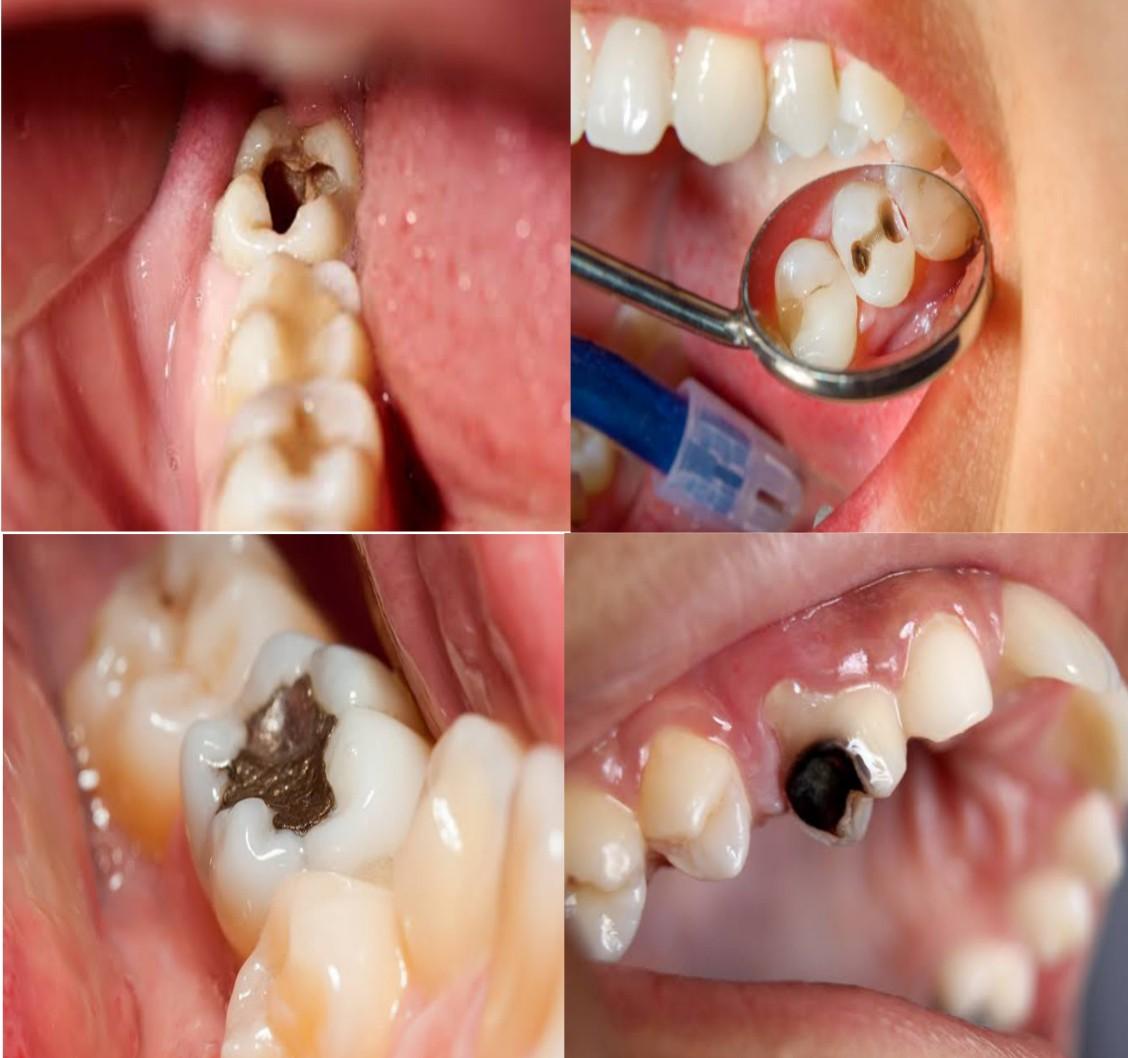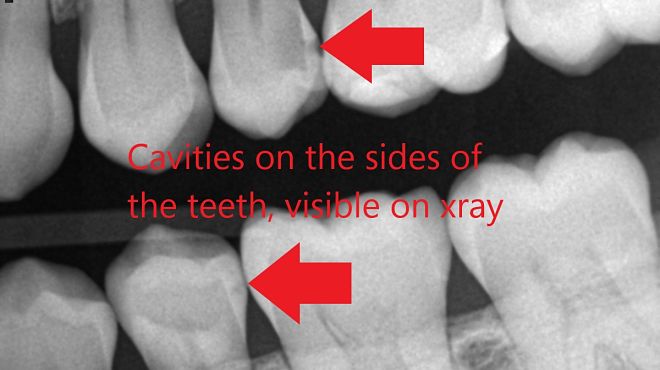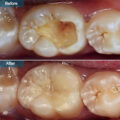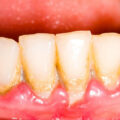Cavities are permanently damaged areas in the hard surface of your teeth that develop into tiny openings or holes. Cavities, also called tooth decay or caries, are caused by a combination of factors, including bacteria in your mouth, frequent snacking, sipping sugary drinks and not cleaning your teeth well.
Cavities and tooth decay are among the world’s most common health problems. They’re especially common in children, teenagers and older adults. But anyone who has teeth can get cavities, including infants.
If cavities aren’t treated, they get larger and affect deeper layers of your teeth. They can lead to a severe toothache, infection and tooth loss. In this article we will show us what pre cavities looks like, what does a cavity look like between teeth, and what a cavity looks like on the side of a tooth.
What are the Causes of Cavities and Tooth Decay?
There are a number of steps required for cavities to form, starting from the loss of tooth mineral (demineralization) to eating all the way through the tooth to cause a cavity. Tooth decay also occurs when foods containing carbohydrates become trapped between teeth and are not completely removed with brushing and flossing.
Major causes of tooth decay are sugary, sticky foods and beverages. The more sugar consumed, the more acid, which gets produced leading to decay. Sugar combines with plaque to weaken the enamel leaving you vulnerable to tooth decay. Each time you eat a sugary snack, your teeth are vulnerable to damage from the acids for the next 20 minutes. It is important to understand the causes of tooth decay so you can learn the proper way to care for your teeth and care for your health. Cavity and tooth decay factors to watch out for:
Poor Oral Hygiene: Not brushing your teeth regularly allows plaque to build up and attack the tooth enamel.
Plaque Formation: When not removed on regular basis, plaque adheres to your teeth and builds up over time. In presence of sugar, plaque produces acid which attacks the enamel of your tooth and eventually can cause holes in your teeth, otherwise known as cavities.
Dry Mouth: Saliva helps wash plaque from the teeth and buffer the acid. If you have a dry mouth with very little saliva, plaque and tooth bacteria may build up more quickly.
Eating and Drinking: This is where it all begins. Since we all have to eat and drink to live, there’s no way to avoid this, but it does play a significant role in the formation of cavities. When you eat or drink, carbohydrates remain on your teeth until you brush. Even after brushing, you may not be able to remove all food particles or carbohydrates from your teeth. Foods that tend to cling to your teeth can increase your risk for a tooth cavity. Be sure to brush your teeth regularly, especially after drinking milk or sugar containing soda, or after eating dried fruit, dry cereal, hard candy, caramel, taffy, raisins, sugary cereals, , and cookies.
Plaque Bacteria and Acid: While most people don’t like to think about it, bacteria naturally live in your mouth and on your teeth. When these bacteria digest the carbohydrates that linger on your teeth and in your mouth, acid forms.
Medical Problems: Some types of cancer treatment that expose the head and neck to radiation can promote a tooth cavity by changing the makeup of the saliva to promote increased bacterial growth.
Sugar’s cavity causing effects Signs and Symptoms of Tooth Decay and Cavities
As tooth decay progresses, cavity symptoms start to appear. If you notice any of these common cavity symptoms, see your dentist as soon as possible. The earlier symptoms are identified, the quicker and easier the cavity treatment will be. Tune in to your teeth, and be on the lookout for these cavity symptoms:
Pain: A toothache is one of the most common cavity symptoms.
Pressure: Both increased tooth sensitivity and pain when biting down can indicate a cavity.
Pits: Cavity symptoms may include a noticeable hole or pit in the affected tooth. Sometimes the holes are only visible on a dental x-ray.
Other common signs of a cavity that you will likely notice on your own include a toothache or sensitive teeth—particularly when eating sweet, hot or cold foods or drinks. These signs of a cavity are usually associated with advanced tooth decay and therefore require immediate attention from a dental professional.
What does a cavity look like?
In Some cases cavities start with a whitish or chalky looking appearance on the enamel of your tooth. More serious cases of cavities can have a discolored brown or black color appearance. However, most often there are no distinguishable signs. So how do you know if you have a cavity when there are no early cavity signs? An X-ray at a dentist visit can easily illuminate the tooth and determine if there is a cavity. It’s just another good reason to keep up with your regular six-month dental checkups.
How to Prevent Tooth Decay and Cavities
Just as you learned from your dentist at an early age, prevention is the best way to avoid a cavity. There are many measures you can take to help prevent the formation of a dental cavity or other types of tooth decay and damage. The first step in preventing a dental cavity is to start and keep up with a comprehensive oral hygiene routine. While this can sound overwhelming, once it becomes a habit, you’ll be pleased to enjoy the healthy mouth and beautiful smile that comes with good oral hygiene. While there are many options for oral hygiene these days, here is a basic checklist of the core items you’ll need to incorporate into your daily routine to help prevent a dental cavity. When you head to the drug store, take this handy list to help get you started on the path to better oral health and hygiene—and the prevention of a dental cavity.
Toothbrush: Everyone knows you need a toothbrush to keep your teeth clean, but many don’t give the variety of toothbrushes much thought. While there are hundreds of options available, look carefully to find a toothbrush that can reach all the surfaces of your teeth. It’s also a good idea to find a brush that includes a textured tongue cleaner, since bacteria that cause oral malodor often live on your tongue.
Toothpaste: This is a critical component of your oral hygiene routine for prevention of a dental cavity. While dozens of products are available, most dentists recommend selecting a product that is accepted by the American Dental Association (ADA). Crest Pro-Health Toothpastes are the first and only that are ADA-approved for six areas: cavities, gingivitis, plaque, whitening, sensitivity, and bad breath. All Crest Pro-Health toothpastes are triclosan free.
Dental Floss: Flossing on a regular basis is very important. By removing food particles from your teeth, flossing can help prevent dental cavities. Many people find that flossing, particularly in tight spaces, is facilitated with a floss like Oral-B Glide floss.
Mouthwash: Mouthwash is often the final step in an effective daily oral hygiene routine. Not only does the use of a therapeutic mouth rinse leave your mouth feeling clean and your breath fresh, it kills the bacteria that can cause plaque and gingivitis. While many people don’t like to use an alcohol containing mouth rinse because of the burn from the alcohol, the entire Crest Pro-Health line of mouth rinses is alcohol-free.
Establish an Oral Hygiene Routine
There are a number of important steps involved in keeping your teeth and mouth healthy from cavities and tooth decay. Taking good care of your teeth can help prevent tooth decay and ultimately cavities. Adhering to a comprehensive oral hygiene regimen is the first step to good oral health. Here are some important tips to help prevent tooth decay and cavities.
Brush more often: Just because your dentist says to brush twice a day doesn’t mean you have to stop there. One great way to prevent the formation of plaque that causes cavities is to brush after every meal or snack. This is the golden rule of oral hygiene. Brushing after you eat or drink with a fluoride-based toothpaste can help keep your teeth clean and free of plaque that leads to tooth decay and cavities.
Limit your intake of sugary foods and drinks: Candy, sodas and other sugary foods contain sugars that help plaque-forming bacteria survive in your mouth. In addition, sugary foods or candies that stay in your mouth for longer periods of time can also have a greater impact in the formation of plaque and tooth decay. If you do indulge, brush your teeth after eating to help prevent the progression of tooth decay.
Watch What You Eat: Foods that get stuck in your teeth, such as chips, candies, or cookies can also aggravate tooth decay. Opt to snack on raw fruits and vegetables as much as possible because they can actually help remove plaque by naturally “scrubbing” your teeth. They’re also healthier for your body.
Floss and Rinse daily: While good brushing is critical, it won’t necessarily do the job alone. Flossing daily and using a mouth rinse that protects against plaque build-up will help reduce your risk for developing problems. Flossing removes the food particles that get lodged in between your teeth and slowly cause plaque build-up that leads to cavities.
Protect Your Teeth with Fluoride: Protection is key in preventing tooth cavities; fluoride is known to prevent tooth decay. Ensure your water contains a safe level of fluoride, and use products that contain fluoride. Crest Pro-Health Enamel Shield Toothpaste can help protect against tooth enamel loss. Products such as Crest Pro-Health Multi-Protection Mouthwash can help protect against plaque and gingivitis while you sleep. Rinse right before you go to bed and it will work all night. When used again in the morning, it provides 24-hour protection to help kill germs, prevent gingivitis, and freshen breath.
Visit Your Dentist: No matter how diligent you are about your daily oral hygiene routine, see a professional twice a year for routine cleanings and exams. Having your teeth professionally cleaned will remove plaque and tartar that you can’t remove with over-the-counter products and tools.
Taking good care of your teeth can help prevent tooth decay and ultimately cavities. Adhering to a comprehensive oral hygiene regimen is the first step to good oral health. SEE: When Can I Smoke After Tooth Extraction?







